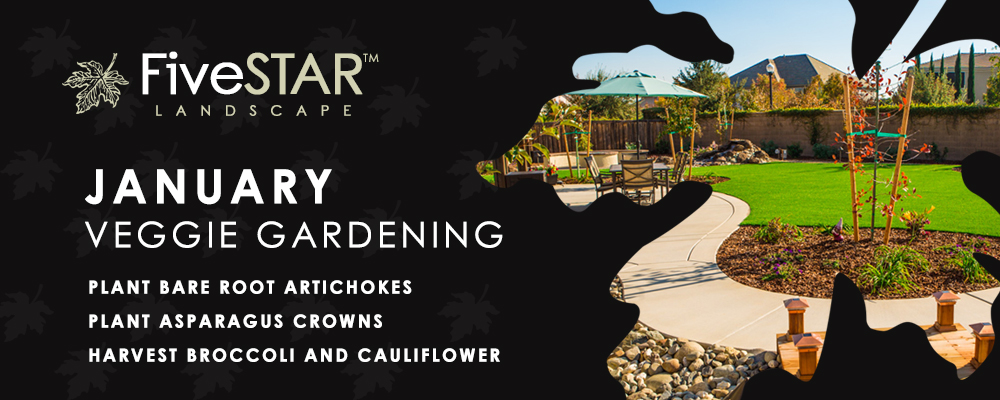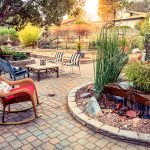January Veggie Gardening Tips Sacramento
January Veggie Gardening Tips in Sacramento

Zone 9b Sacramento, CA – Plant bare root artichokes, Plant asparagus crowns and Harvest broccoli and cauliflower
Now is a good time to start shopping for seeds. It’s cold outside and it’s not really time to be tilling up a lot of ground to plant a bunch of seeds yet. But when you’re indoors cuddled under a blanket, you can be flipping through catalogs and planning out your garden. If you want to do companion planting, start planning your garden layout now, so that as you sow your cold weather crops this month and next month you will know where your warm weather crops will be too.
You can always shop for seeds at local nurseries. You will be sure to get seeds that will work well in your area. Nurseries like Green Acres in Sacramento are also a great place to get expert advice about planting. Keep in mind, though, that your local nursery may have a limited selection. You can get lots more options if you shop online or in a catalog. Whether you want to use heirloom varieties or just want really unusual vegetables in your garden, you can find absolutely everything online or by mail order. If you need help with a Landscape Design Installation and planning your next garden, don’t hesitate to reach out to FiveSTAR Landscape in Sacramento for a plan.
Plant Bare Root Artichokes
Most of your garden is still dormant, but this is the time to plant bare root artichokes. Bare root artichoke crowns should be available at local nurseries any time in January.
Where to plant bare root artichokes: Pick a spot that gets sun in the morning and shade in the afternoon. This will extend their growing season as long as possible. Artichokes suffer in the heat of the summer, so letting them get sun in the morning when it is cool but keeping them in the shade in the heat of the afternoon will help keep them vibrant longer.
Plant your bare root artichokes 4 to 6 feet apart. They are big plants, so they can easily be incorporated into an edible landscaping plan.
Fertilize your artichokes every month with a high nitrogen fertilizer. You can use a commercial fertilizer from a seed store, or you can use plain chicken manure. Even though the plants need a lot of nitrogen, you should still avoid letting the fertilizer touch the plant directly. Instead, put the fertilizer or manure in a ring around the plant and water it into the soil.
Artichokes will go dormant during the heat of the summer. As the weather cools down in the fall, though, they will start growing again with vigor.
Harvest buds when they are plump and tight. If the buds have started to open, don’t bother harvesting them. They will be too tough to eat anyway. Just let them bloom and enjoy the gorgeous purple flowers.
Plant Asparagus Crowns
If you aren’t already growing asparagus, you are missing out. This perennial is so easy to take care of and so rewarding to grow that it really deserves to be a staple in every garden. January is the time to plant asparagus crowns in Zone 9b, which is Sacramento’s growing zone.
Plant asparagus crowns in well-drained soil with plenty of organic matter. A raised bed is perfect for asparagus. The first year, do not harvest it. Just water it and let it grow. Asparagus is a rhizome, so eventually the entire raised bed will have a huge plant structure under the ground, with little asparagus spears popping up like fingers.
Since asparagus is a rhizome, do not till or hoe the plant bed! Pull weeds as they pop up, and leave the soil undisturbed. The second year after planting asparagus, you can begin harvesting the stalks as they poke their little heads up. After the harvest, let them grow up and fern. Ideally, you want a bed full of large asparagus ferns during the late summer and early fall, because this help to promote root growth so that your next harvest will be even better.
Harvest Cauliflower and Broccoli
If you planted a fall garden of cauliflower or broccoli, January is the beginning of harvest time. Broccoli can be harvested as soon as you have tightly closed flower buds. Most of the plant above the ground is edible, though if you let it “bolt” (flower and drop seeds), it tastes very bitter.
Cauliflower is a bit more complex. With white headed varieties, you need to blanch the heads to keep them white and mild tasting. When they are about as large as a chicken egg, bend plant leaves over the cauliflower heads and tie the tips of the leaves at the top. Make sure that there is room for the head to grow. You will need to unwrap the cauliflower heads regularly to check for pests, let them dry out after rain, and check for maturity. Harvest cauliflower heads when the flower buds are still tight.





